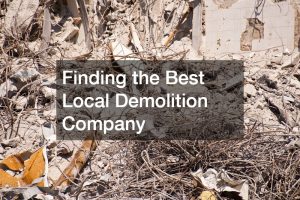Over the years, we’ve come to a greater sense of awareness regarding the need to live more sustainably. And the building sector, one of the major contributors to carbon emissions, is offering a solution in the form of net-zero homes. But is this the right solution for you?
Net-zero breakdown
The simple definition of a net-zero home is one that generates as much electricity on-site as it consumes over a year. This balancing act doesn’t have to take place simultaneously. There will be times, for instance, when inclement weather blocks out the sun. You can draw from the local power grid on occasion because over time, the deficit will be paid back.
Net-zero homes achieve this through a combination of different methods. Residential solar plays a key role, of course. A wind turbine on the roof can further supplement the generation of electricity. And the ability to pump groundwater, with its stable temperature, can effectively harness geothermal heat for home purposes.
Creating energy must also be combined with high overall efficiency to lower effective maintenance costs. Thus, you’ll commonly see mechanisms such as thick insulation, energy-efficient windows and doors, and passive heating or cooling depending on the climate.
Waste recovery is another vital component of net-zero builds. Construction debris can be variously repurposed. Wood chips can serve as mulch, while excavated soil is reused for landscaping purposes. Wastewater from inside the house can be collected and used for irrigation or toilet flushing.
Those efficiency measures extend inside the home, of course. Appliances and fixtures need to be selected for the most energy-efficient features. Daylight should be maximized, with LED lighting preferred for backup. And smart home systems can play a further role in automating the consumption of energy throughout the house.
Potential restrictions and downsides
The prospect of owning and living in a net-zero home must be tantalizing. Add up your energy bills over the months and years, and that total is the amount you could be saving through no additional effort on your part. In a few years, you could offset the cost of retrofitting. In 14 years or even less, your home could pay for itself.
However, those numbers don’t tell the whole story. Your mileage will vary greatly depending on location. For instance, in a climate that’s more prone to lie on the extreme end of heat or cold, indoor thermoregulation takes more work.
The location also plays a major role in your ability to draw upon renewable sources of energy. For example, photovoltaic cells are at their most efficient in spacious areas where no nearby trees or structures block the sun. As buildings grow more compact, vertical, and closely packed, the returns diminish. Certifying bodies like the ILFI even make exceptions for urban residences.
Similar problems crop up when dealing with wind and geothermal energy. In general, it’s a lot easier to achieve a net-zero build in certain parts of the country, typically rural or suburban ones. It might be impossible for urban homes to accomplish that feat.
A question of fit

This means that costs can actually be greater, and returns lower, than the typical forecast. And that difference is certainly not negligible for a lot of households. Affluent families might not bat an eyelash, but when you could be paying 5-20% more for a home, it’s enough to give many prospective homeowners pause.
For many potential buyers, the question is not entirely about the value of a net-zero home build. Rather, it’s more about how well this sort of home can fit into their lifestyles and align with their goals.
Considering the restrictions stemming from location feasibility, are you willing to forsake city living? For some, the answer will be yes. Others will not want to give up access to convenience, good jobs, better education opportunities, or urban culture and lifestyle options.
How much are you capable and willing to afford on top of the listed price for a typical home in that neighborhood? Remember that if your home ends up well above the price range on local listings, it can be difficult to resell for anything but a loss.
Finally, think carefully about how you prioritize true sustainability. This goes beyond your home and accounts for other lifestyle changes you might be making. Living in a city makes distances more walkable and gives easier access to public transportation. Further out, you’re more likely to drive a car everywhere, which actually increases your carbon footprint.
Net-zero homes are a great solution to have at our disposal, but they aren’t for everyone. Ultimately, you get to decide whether you fit the consumer profile they are intended to serve.







